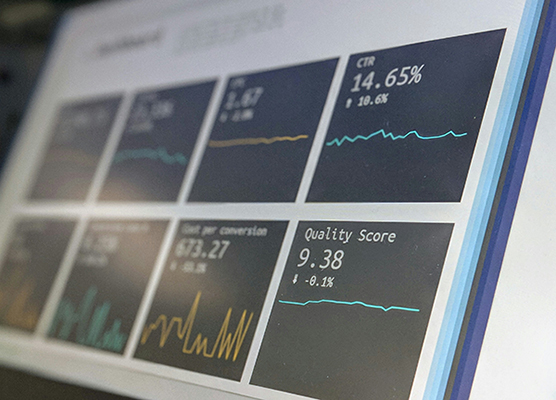As AI technology matures, companies leverage their power to increase efficiencies, quality and sustainability while reducing human error.

By Jordan Anderson, Director with Baker Tilly
Like most industries, manufacturing and distribution have been fundamentally changed with the introduction of Artificial Intelligence into their operations.
AI relies on computer programs that have the ability to learn, perform and reason like humans. Machine learning (ML), a type of AI, uses algorithms with the ability to learn without being explicitly programmed. ML can be supervised, unsupervised or reinforced with a human element. Deep learning, which was inspired by how the human brain operates, is a type of ML in which artificial neural networks adapt and learn from vast amounts of data. In fact, instances of AI can be found throughout the M&D process.
Predictive maintenance uses AI algorithms to analyze data from machine sensors to predict equipment failures before they happen, reducing downtime and maintenance cost. AI can be used to analyze real-time equipment, inventory and purchasing data to help ensure optimal inventory levels and predict the need for replacements or restocking. AI can also be used to avoid production disruption by identifying patterns in usage and anomalies in machines using vibration analysis to identify wear and tear, or monitoring electric motor health to predict when a motor might fail.
AI in quality control uses computer vision systems to inspect and identify defects in products at high speeds with greater accuracy than human inspectors. For example, AI can be used in the automotive industry to inspect critical components of engine parts before assembly, or in electronics manufacturing, to detect microscopic defects in circuit boards.
AI and robotics are widely used in the automotive, electronics, aerospace industries, and in metal and plastic manufacturing, most often in assembly lines and warehouses. On assembly lines, robotics and AI can enhance accuracy and speed while adapting to changing production demands.

Using predictive analytics, AI has become a gamechanger in supply chain management. AI can help provide insights for optimizing inventory levels, managing warehouse capacity, predicting demand and planning efficient delivery routes, and ensure the integrity of transaction records throughout global supply chains. An example of AI use in the supply chain is AI-driven route optimization, where GPS integrates with AI to create the most efficient routes for delivery, considering all possible routes in just seconds before selecting the most direct and safest option. AI can also be used to predict mechanical failure for vehicles (cars, trucks, planes, etc.) and cargo containers, allowing manufacturers to be proactive in preventing failures that would disrupt the supply chain. To do this, data is automatically pulled from vehicle performance records, and fed into prediction models.
AI has also been useful in energy management. AI algorithms optimize energy use in factories and distribution centers, leading to significant cost savings and sustainability improvements. Manufacturers can use AI to analyze energy usage patterns and identify areas where waste occurs, using sensors, meters and other energy monitoring equipment. As such, they can optimize energy consumption and reduce environmental impacts, while contributing to sustainable manufacturing practices. For example, by monitoring and evaluating data from lighting, heating, and cooling systems, AI can determine the most efficient times and methods for their operation. Effective use of AI can also reduce excess waste of raw materials by managing inventory in real time, thus avoiding wasteful purchasing of specific materials.
AI-driven monitoring systems can enhance worker safety by predicting and alerting humans to potential hazards in the workplace. For example, computer vision can be leveraged to analyze worker walking paths in a manufacturing plant or warehouse, identifying hazardous patterns and highlighting layout optimization opportunities. In many cases, more hazards can be identified by AI than through manual human observation. AI can also be used to limit employees’ exposure to loud environments and dangerous tasks by streamlining processes and integrating robotics, allowing workers to focus on less risky activities in a safer work environment.
AI enables mass customization in manufacturing, allowing for products to be tailored to individual customer preferences at scale. For example, AI-powered robotic systems can be used on production lines to facilitate flexible and efficient customization, allowing manufacturers to adjust specifications based on individual customer requirements. When combined with 3-D printing, AI can be used to create prototypes for testing, saving time and resources as manufacturers move toward a final customized product.
Another common area of customization is in company marketing. For example, AI works behind the scenes on many manufacturers’ websites to adjust the site’s content to recommend similar products and create a highly personalized experience.
Like other industries, manufacturers are leaning into AI in the office. AI-informed Intelligent Process Automation (IPA) assists clerical workers by performing tasks that were previously executed by humans. IPA includes robotic process automation used to perform office tasks such as extracting data, filling in forms and moving files. Manual clerical and back-office processes are often made more efficient with AI tools like optical character recognition and large language models. In addition, AI-powered chatbots and virtual assistants are often used to provide personalized customer support, freeing up employees’ time for other work.
Without a doubt, AI is now an integral part of M&D. Over the coming years, as more AI is incorporated into the industry, we can expect to see enhanced productivity, quality, and flexibility, along with a reduction in costs and improved sustainability.

About the Author:
Jordan Anderson is a director with Baker Tilly’s digital consulting practice, with more than 20 years of experience in strategy, planning, analytics and digital solution architecture across numerous business functions and industries. With experience as a strategic team leader, analyst, architect and developer of analytics and AI solutions, Jordan helps businesses alight their goals with strategic and technological resources.
Scott Ellyson, CEO of East West Manufacturing, brings decades of global manufacturing and supply chain leadership to the conversation. In this episode, he shares practical insights on scaling operations, navigating complexity, and building resilient manufacturing networks in an increasingly connected world.